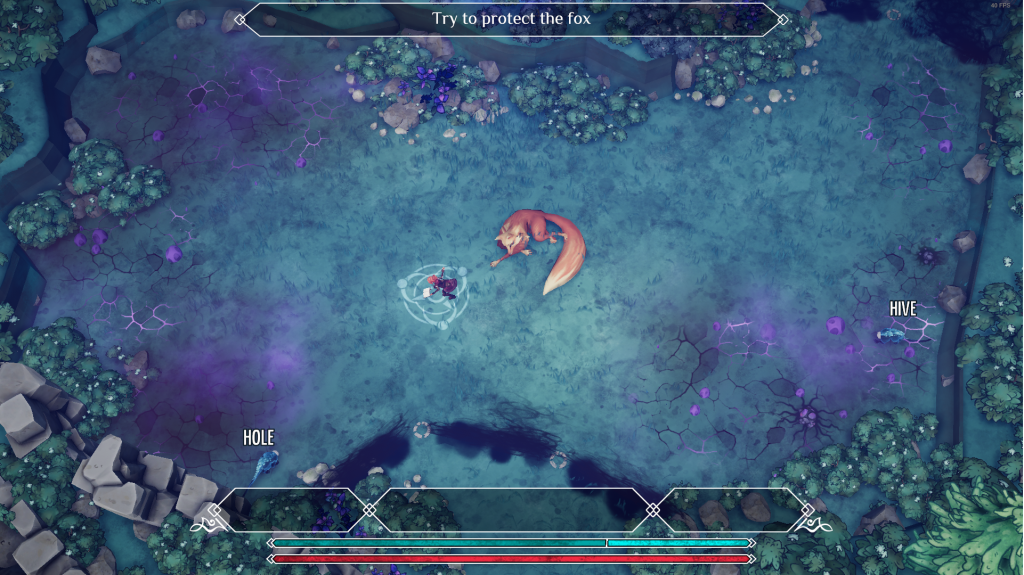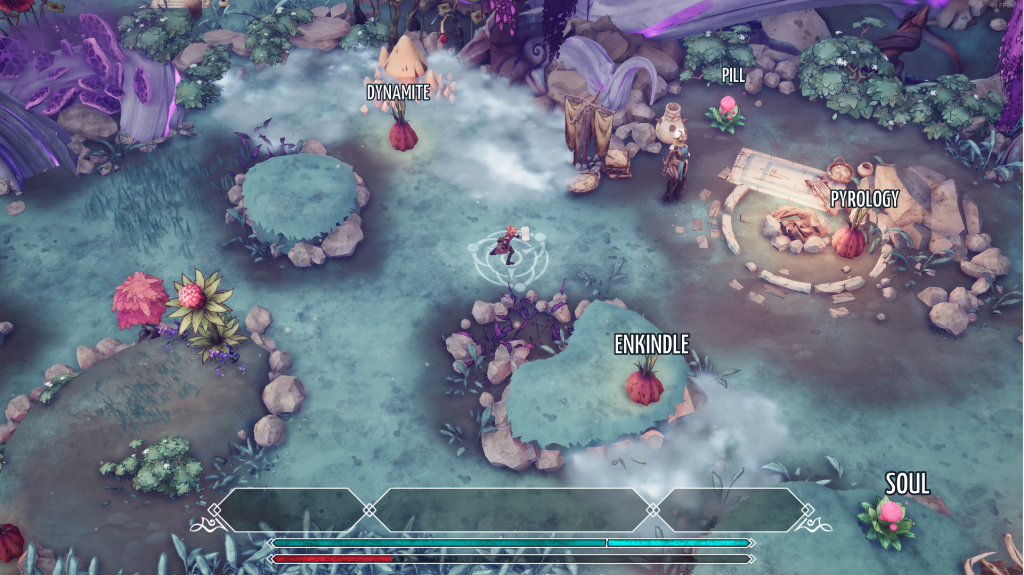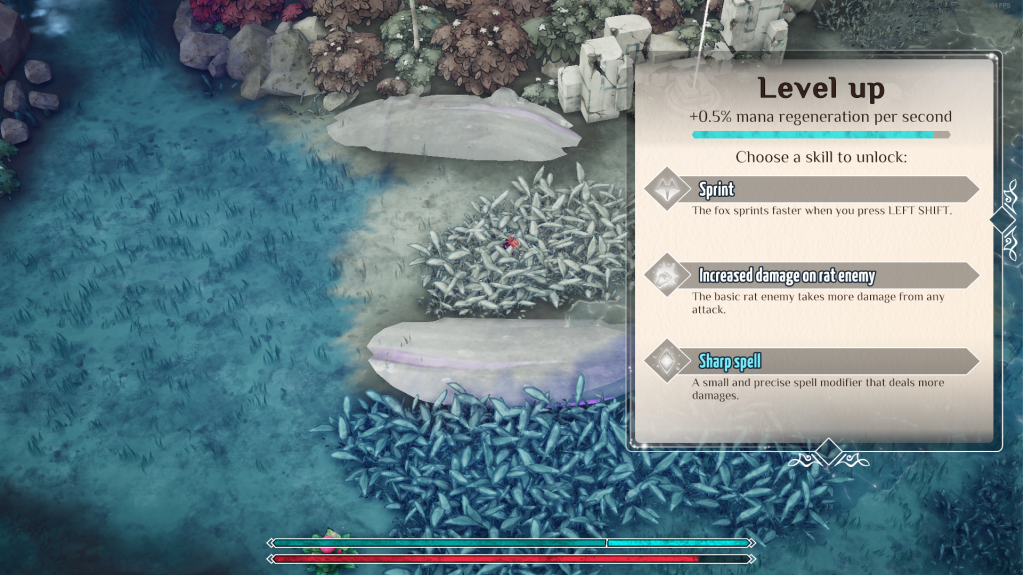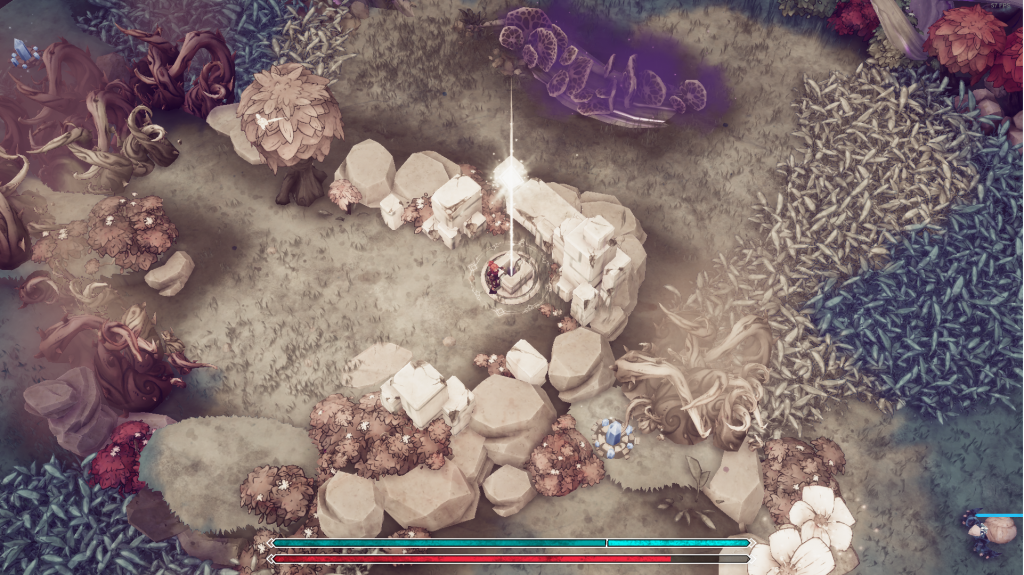Among the now countless number of indie games releasing each week, some try maybe too hard to catch the eye of customers by implementing a key mechanic different to other games in order to give the title some uniqueness with which to attract potential buyers. However these mechanics can be the demise of the same game if not implemented correctly. Such is surely not the case with Nanotale, the second entry in Fishing Cactus‘ Typing Chronicles Franchise after the very well received Epistory, and while Nanotale not being a direct sequel, it definitely takes inspiration from it.
Nanotale follows the adventures of a young archivist, Rosalind, on her journey to learn magic and more about the environment that surrounds her and everything else in the world. She has power within her, and through her travels she will learn to unleash that power to help those around her. Her quest starts off as another lesson from her instructor, Lavender, who is aiming to teach the young protagonist about magic.

After going through the basic commands of the game, you stray apart from your teacher and find an injured fox, and are tasked to save the defenceless animal against the enemies emerging from the shadows. Upon accomplishing your objective, the fox transports you to a different part of the realm, arguably a place where Rosalind is more needed than the training adventures with Lavender. From here, Nanotale kicks off its charming story of bringing light to wherever is needed, starting from the small village which the fox takes you to.

The unique mechanic which makes Nanotale so particular and fun is that everything apart from movement is based on typing. Pressing spacebar will open up your journal in which Rosalind will be casting her magic, and typing the words presented on screen will cast an orb of magic to bring out the properties of the item affected. Casting a spell on a fire flower for example will cause it to explode in flames, engulfing anything in its proximity like enemies or vegetation.
As you progress through the game, Rosalind will also learn variations of the spells themselves which can be split in two categories – shape of the spell and range of the spell. The Ray variation for example condenses the spell in a single beam of effect instead of the area of effect you’d generally get. This adds an element of strategy and planning to your spells, as some areas need a fair bit of thinking to discover how to proceed. The other variation includes modifiers such as long or large, which can alter the area of effect of spells or their duration.

One of the main ways of obtaining experience in Nanotale is exploration, where a large number of flora in the landscape can be analysed to learn more about the species. Rosalind will then read out the description as she jots down the notes on her diary, which gives the game a more personal feeling. These notes sometimes carry a little minigame where you also type out the words which pop up when analysing a flower, giving more insight into the diversity of each different type of flower or plant you inspect.

Levelling up in Nanotale is not measured in a skill tree of sorts, but instead permits players to unlock one of three abilities which will no doubt enhance your abilities although not necessarily in combat. These abilities can range from more HP to more damage to particular enemies, as well as unlocking new spell variants such as the long spell which as we mentioned previously makes spells last a little while longer.

Combining different spells and abilities together to open up a path where you think you cannot progress through is surely one of Nanotale‘s most rewarding things to do. Some areas appear to be extremely restricted, so you will need to roam around and find what you need to continue. Vegetation can be grown by bursting water bubbles on short grass, which can then be ignited with fire to burn the greenery and everything touching the plants, resulting in huge destruction but also the possibility to open new roads.

In Nanotale, the next course of action may not be very straight forward, as you will need to roam around quite a while to find where you need to go next. However, these pillars of light are sure to help your way to the objective, as these are either the objective itself, or can help unlock a path towards it. All Rosalind needs to do is find a way to get near the pillar of light by either opening up bridges leading to it, or get past whatever obstacles are in the way.
Fishing Cactus have surely done a stellar job in the gameplay department, but Nanotale also shines with its gorgeous visuals and captivating soundtrack. The different environments which Rosalind gets to explore, whether the huge Tree at the centre of the first village or the desert just next to it, among others, are all drawn so beautifully that it feels a waste to not just sit in the shade of a tree and simply take it all in. We are however not in a position to sit around and waste time, so we can instead enjoy the beauty of the world in screenshot format.

Nanotale – Typing Chronicles is one of the most original titles I have played this year, and with good reason. Apart from its beautiful visuals and setting, it brings a challenge to players to keep up with the enemies and type away to kill the threats in time. You can even get yourself accustomed to fast typing and perhaps boost your chances of being recruited as a data input clerk, all while playing a solid title with an interesting story.
Be sure to check out Nanotale‘s Steam page here.
And for more gaming reviews, visit our dedicated section HERE.